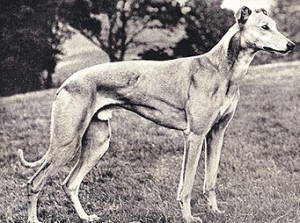Hound Popularity – By the Numbers
264 – November/December, 2017
by Amy Fernandez
 Who doesn’t love polls and surveys? Mountains of tedious data get neatly distilled into a convenient takeaway message. And therein lays the danger–as noted in those fineprint disclaimers tagged onto the end. Due to expected error margins any conclusions inferred by the results blah blah blah…
Who doesn’t love polls and surveys? Mountains of tedious data get neatly distilled into a convenient takeaway message. And therein lays the danger–as noted in those fineprint disclaimers tagged onto the end. Due to expected error margins any conclusions inferred by the results blah blah blah…
Perhaps the most notorious example in this little corner of the universe are those heralded announcements of each year’s most popular breeds. Leaving aside the problems linked to disproportionate popularity, this snapshot of purebred demographics is generally granted far more credibility than some random survey asking dog lovers about the breeds they fancy. These results come straight from AKC’s cold hard numbers. It’s purely objective and also deceptively misleading. Because there’s always a wild card snarling up that bell curve–actually a whole group of them–the Hound Group. They introduce a whole slew of unpredictable, unquantifiable factors into the equation essentially rendering the whole thing meaningless.
For starters, only two hounds consistently earn high ratings. Dachshunds, thirteenth in 2016, have hovered at the top since 1930 when AKC rolled out its Hound group. That’s the first problem. Theoretically, as a century of experts have contended, Dachshunds maybe shouldn’t even be in this group.
Smooths lead in popularity. But Longhairs and Wires contribute their share of votes, further complicating the results. Of course, some argue that Dachshunds should have six varieties. FCI solved this by creating a separate Dachshund group with nine coat and size divisions. There’s a lotta ways to calculate their input.
AKC BEAGLE RANKINGS
Beagles debuted in seventh place in 1885, skipped around the top ten until 1905 when they jumped to fourth, rose to second in 1935 and reached number one for the first time in 1940. They hit it again in 1953, owned it until 1959, remained the top ten since then and currently rank fifth.
Then there’s the Beagle. America’s most consistently popular hound also gets a double shot at the numbers. Beagles have been big since AKC’s founding. There’s no sense debating why AKC won’t acknowledge sizes in Dachs- hunds but divided Beagles by a mere two inches. It really doesn’t matter since it barely addresses the parameters of America’s Beagle stack.
AKC’s impressive Beagle tally was nothing. Over in the field trial side of the business registrations were off the charts by 1949 when Glenn Black’s American Beagling explained when and why the Beagle world started keeping two sets of books. “For many years AKC policy made it extremely difficult for new clubs to obtain official recognition; there is no denying the fact that Beagledom was seriously held back …but Beagling, however, was far too husky a youngster to have its ultimate growth prevented by such an unsound and persistent obstacle…”
Even though AKC was all into Gundog field trials and Beagles consistently brought in the bucks, the breed got decades of corporate flak over the parent club’s involvement in both bench shows and field trials. Faced with a standoff, they dithered eventually forming the Beagle Advisory Committee in 1936. By then, “The creation of the International Beagle Federation in 1931,” said Black, “generated such a boom in field trial activity by 1945 the committee found itself representing a small minority rather than the majority of Beagledom.” Black included some alarming calculations about where this was headed but admitted that stemming the tide of Beagle divergence seemed virtually impossible by then considering the range of types, agendas, and organizations contributing to the numbers.
Click here to read the complete article264 – November/December, 2017
Short URL: https://caninechronicle.com/?p=135178
Comments are closed











